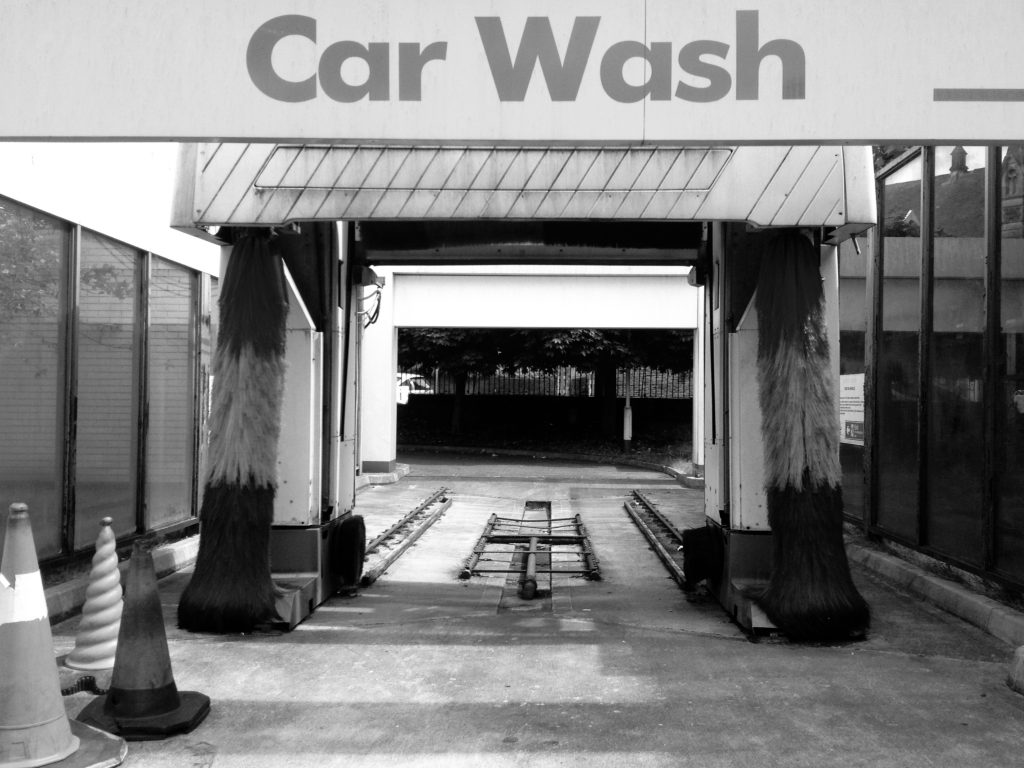
This machine can be devastating in more ways than one. Think about how a very plush high-quality microfiber towel feels to the touch. Imagine how gently professional detailers rub the painted and non painted surfaces of your car with this material. Think of a person being mindful of sensitive areas around your car and taking the time to safely clean and protect every little surface around the vehicle. This takes hours to perform correctly, not minutes …
What I just described and what you imaged is the complete opposite of the automatic car wash experience. Although technological advances have made the automatic brush material somewhat safer, it is still not as gentle as careful hand washing. Various hog hair and cloth brushes produce the worst type of damage. More recently a special foam that produces less damage has become more commonly used and it is an improvement in two areas; the material is less abrasive and it repels dirt more easily. This does not mean the material is scratch proof. Ask yourself, how often do these instruments get cleaned? The dirt and debris from all of the vehicles headed through the wash before your car are still lodged into these brushes and will be hitting your paint at high speeds. The speed at which this material spins can be most problematic! Swirls, scratches and imperfections in the paint will happen, but what about other types of damages?
The weather-stripping on my car, you can see below, is lifted along with a line here. I noticed this shortly after the dealership took it upon themselves to give me a courtesy assault on my car. This should be a reminder other parts of your car can be damaged. When material is spinning at uber-fast speeds (100+ mph), sensitive areas of your car will be damaged.
It was well over a week until I noticed this on both sides of my car. After hearing similar stories over time, it became clear what the cause was.
When the automatic car wash is brought up in discussion, I am not coy about showing this (pictured above) to my clients.
In addition to swirls, flying debris in the tunnel wash can possibly lead to deep scratches.
I remember waiting inside the dealership to fill outside some paperwork for a repair. I noticed a sign absolving themselves of responsibility for any damage done to trim or weather-stripping from their automatic car washes. If this is not an explicit acknowledgment that these brushes are bad for your car, I do not know what can be clearer.
An Alternative
If you are stressed for time or the environment is not conducive to traditional two bucket wash, there are alternative wash methods. Even if you are not crazy about a rinseless wash (Optimum No Rinse) that is a far better option. Even a waterless (Poorboys Waterless) alternative is safer. I am not very fond of waterless washing unless it is a classic car (where moisture needs to be controlled). But you likely cannot do more damage to your car with decent technique than if you were to allow those brushes to touch it.
Here are two articles on rinseless washing that you might find helpful:
- Waterless and Rinseless Washing: What it is and How to do it Properly
- Product Review & How-To Guide: Wolfgang Uber Rinseless Wash
The Do Not Wash Hang Tag should also be in every enthusiast’s glove compartment. It will help combat the dealerships and their desire to run cars through tunnel washes or hand the car off to their “detail department”.
Related Posts
- Detailing Wash Process According to ChatGPT
- New to Detailing Product Guide – Standard Details Edition
- Product Review: The Rag Company Gauntlet Drying Towel
- Unlocking the Plant Power of Oberk APS : A Comprehensive Guide Of The Ultimate Organic Soap For Professionals and DIY enthusiasts
- Product Review: Autofiber Wash Monster Plush Car Wash Pad
